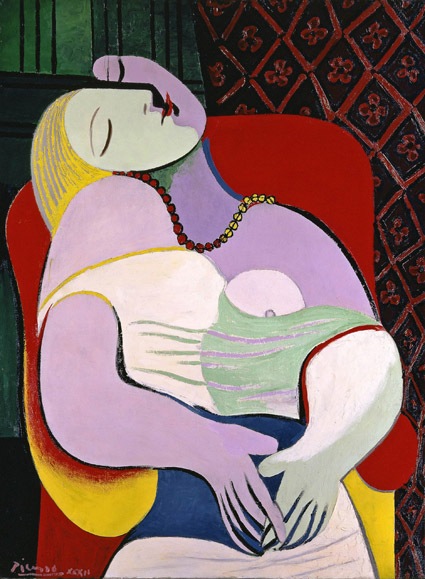
The exhibition will be one of the most significant shows the gallery has ever staged. It will take visitors on a month-by-month journey through 1932, a time so pivotal in Picasso’s life and work that it has been called his ‘year of wonders’. More than 100 outstanding paintings, sculptures and works on paper will demonstrate his prolific and restlessly inventive character. They will strip away common myths to reveal the man and the artist in his full complexity and richness.
1932 was an extraordinary year for Picasso, even by his own standards. His paintings reached a new level of sensuality and he cemented his celebrity status as the most influential artist of the early 20th century. Over the course of this year he created some of his best loved works, from confident colour-saturated portraits to surrealist drawings, developing ideas from the voluptuous sculptures he had made at his newly acquired country estate.
In his personal life, throughout 1932, Picasso kept a delicate balance between tending to his wife Olga Khokhlova and their 11-year-old son Paulo, and his passionate love affair with Marie-Thérèse Walter, 28 years his junior. The exhibition will bring these complex artistic and personal dynamics to life with an unprecedented range of loans from collections around the world, including many record-breaking works held in private hands. Highlights will include Jeune fille devant un miroir (Girl before a Mirror), a signature painting that rarely leaves The Museum of Modern Art, and the legendary Le rêve (The Dream), a virtuoso masterpiece depicting the artist’s muse in ecstatic reverie, which has never been exhibited in the UK before.
1932 was a time of invention and reflection. Having recently turned 50, in collaboration with Christian Zervos, Picasso embarked on the first volume of what remains the most ambitious catalogue of an artist’s work ever made, listing more than 16,000 paintings and drawings. Meanwhile, a group of Paris dealers beat international competition to stage the first ever retrospective of his work, a show that featured new paintings alongside earlier works in a range of different styles. Realist portraits of Olga and Paulo revealed Picasso’s feelings of pride and tenderness for his family, while his sexually charged new paintings revealed for the first time the presence of the secret woman in his life.
Picasso’s journeys between his homes in Boisgeloup and Paris capture the contradictions of his existence at this pivotal moment: a life divided between countryside retreat and urban bustle, established wife and recent lover, painting and sculpture, sensuality and darkness. The year ended traumatically when Marie-Thérèse fell seriously ill after swimming in the river Marne, losing most of her iconic blonde hair. In his final works of the year, Picasso transformed the event into scenes of rescue and rape, a dramatic finale to a year of love, fame and tragedy that pushed Picasso to the height of his creative powers.
Achim Borchardt-Hume, Director of Exhibitions, Tate Modern and co-curator of the exhibition said:
‘Picasso famously described painting as “just another form of keeping a diary”. This exhibition will invite you to get close to the artist, to his ways of thinking and working, and to the tribulations of his personal life at a pivotal moment in his career. By showing stellar loans from public and private collections in the order in which they were made, this exhibition will allow a new generation to discover Picasso’s explosive energy, while surprising those who think they already know the artist.’
Curated by Achim Borchardt-Hume, Director of Exhibitions, Tate Modern and Nancy Ireson, Curator, International Art, with Juliette Rizzi and Laura Bruni, Assistant Curators. The exhibition is organised in collaboration with the Musée National-Picasso, Paris (Tate press-release)
Tate Modern, the Eyal Ofer Galleries. Bankside. London SE1 9TG
Imagen: Pablo Picasso. Le Rêve (El sueño) 1932. Private collection© Succession Picasso/DACS 2017
